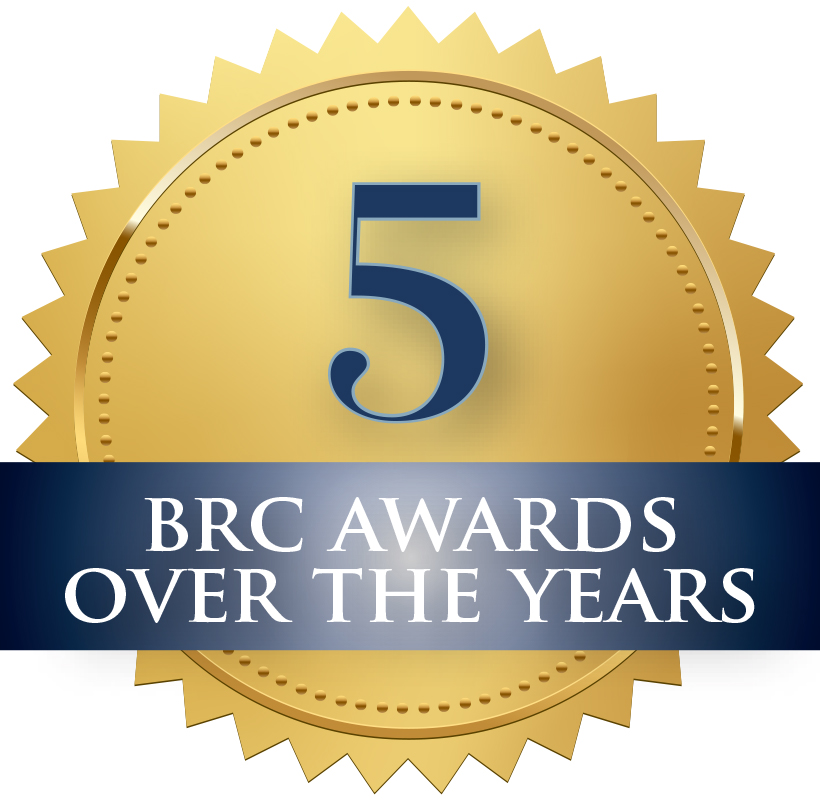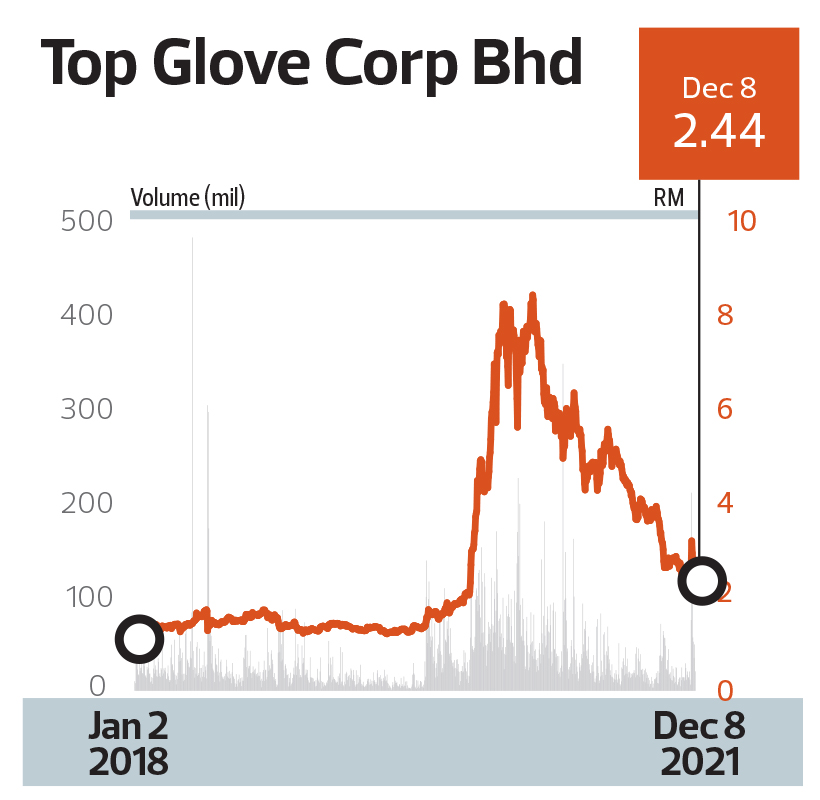
This article first appeared in The Edge Malaysia Weekly on December 27, 2021 - January 2, 2022
The performance of rubber glove companies in the past two years has been particularly spectacular when viewed against their past mediocre performances.
And they have continued to outperform and register supernormal profits well into the first half of 2021 amid the emergence of the highly contagious Delta variant, which fuelled the rise of new Covid-19 cases across the globe.
Top Glove Corp Bhd’s earnings growth pattern was uneven in The Edge Billion Ringgit Club’s (BRC) review period between 2018 and 2020.
However, the exponential earnings growth in the financial year ended Aug 31, 2020 (FY2020), when the world’s largest rubber glove maker achieved a 381% quantum jump in profit after tax (PAT), lifted its three-year PAT compound annual growth rate to 74.4%. This won Top Glove The Edge BRC’s award for highest growth in PAT over three years among companies with RM10 billion to RM40 billion market capitalisation listed on Bursa Malaysia.
The group’s PAT passed the RM1 billion mark for the first time in its financial history to post RM1.8 billion in FY2020. In the two years prior to FY2020, the glove maker’s PAT increased 26% to RM428.8 million in FY2018 from FY2017. It then dipped 15% year on year to RM364.7 million in FY2019.
In September 2020, Top Glove undertook a two-for-one bonus share issue to reward shareholders.
Additionally, shareholders also received big dividend cheques in FY2020 when Top Glove declared a hefty dividend of 11.83 sen per share for the year — a 372% increase over FY2019’s dividend of 2.50 sen per share — which represented a net profit payout ratio of 55%.
Given the ballooning cash pile, Top Glove also spent RM1.4 billion on share buyback between September 2020 and February 2021.
The group’s net cash position stood at RM2.05 billion as at Aug 31, 2021.
The rewards did not stop there. In FY2021, Top Glove paid a net dividend of 65.1 sen, including a special dividend of 15 sen per share.
But it has not been entirely smooth sailing for Top Glove while benefiting from the unprecedented strong demand for disposable rubber gloves. In July 2020, the US Customs and Border Protection (CBP) slapped an import ban on its gloves produced in Malaysia over forced labour allegations. However, it managed to resolve all indicators of forced labour in its operations, which was verified by London-based ethical trade consultant Impactt Ltd, in April this year.
In September, Top Glove announced that its Malaysia operations have been allowed to resume exporting gloves to the US, which accounts for 15% of the group’s total sales. This positive development is expected to boost sales from Top Glove’s home operations.
Top Glove was also affected by 2021’s lockdown restrictions, which saw the temporary shutdown of its factories located in areas affected by the Enhanced Movement Control Order. Its remaining factories in Malaysia were under 60% workforce due to MCO regulations and had a utilisation rate of 70% to 75% during the period.
Despite bumps in the road, the group went on to deliver its best-ever performance in FY2021, posting a whopping RM7.9 billion in PAT — up 349% from FY2020.
Looking past supernormal profits brought about by the spike in cases due to the pandemic, analysts believe that long-term glove demand growth remains intact — even after Covid-19 ends — and that glove makers’ fundamentals remain steady for the next few years.
Top Glove intends to undertake a dual primary listing exercise on the Hong Kong Stock Exchange (HKEX). Owing to the turn of sentiment on glove manufacturers, Top Glove has had to scale down its IPO in Hong Kong.
It had on Oct 28 resubmitted its application for the Hong Kong IPO. It plans to raise net proceeds of RM2 billion to RM2.3 billion, which is significantly lower than its plans to raise RM4.2 billion in April and RM7.7 billion in February. Upon completion of the exercise, Top Glove’s shares will be listed and traded on Bursa, the Singapore Exchange and HKEX.
However, analysts caution on the dilutive effect caused by the dual listing.
Save by subscribing to us for your print and/or digital copy.
P/S: The Edge is also available on Apple's App Store and Android's Google Play.


